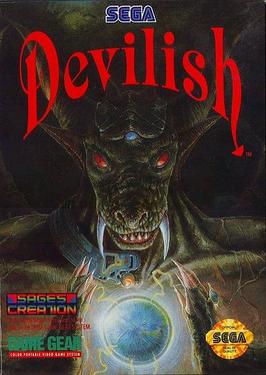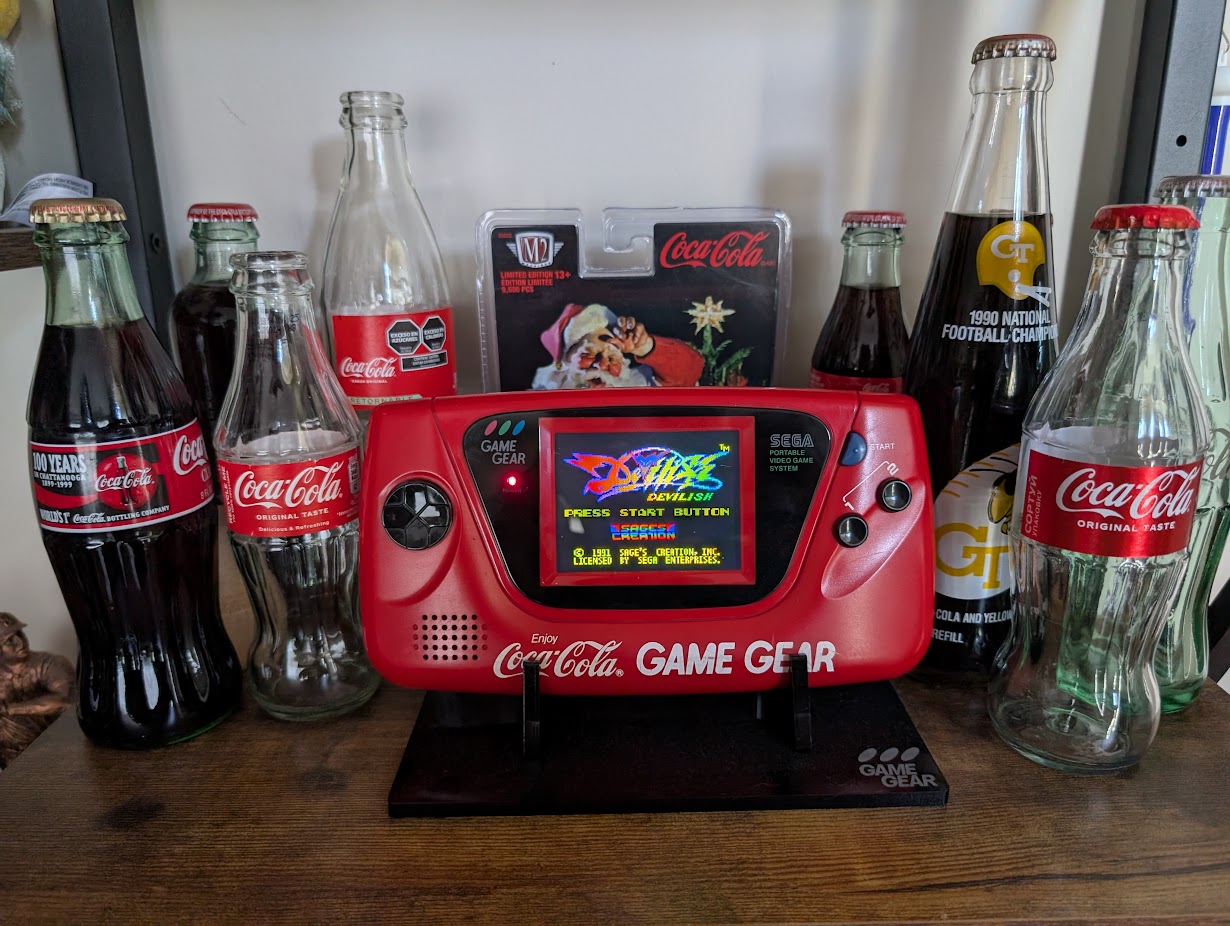GAME CLEAR No. 237 -- Devilish
video games game clear sega game gear sage's creation opera houseDevilish (1991, Game Gear)
Developer: Opera House
Publisher: Sage’s Creation (NA), Genki (JP)
Clear Version: Game Gear
Clear Platform: Game Gear
Clear Date: 6/23/25

| Why should I care? |
|---|
| Devilish is a rare bespoke Game Gear game with novel ball-and-paddle mechanics. |
Monster bash
This is my kind of bad game, man. I mentioned in GAME CLEAR No. 235 that I was recently at Southern-Fried Gaming Expo, a local convention for fans of pinball and vintage video games. One of the vendors there had this little game, and I’d never heard of it. A quick internet search revealed it was an original, third-party title for the Game Gear that spawned a series of three games. I immediately wondered if there were literally any other game series that started as a Game Gear exclusive and got multiple sequels. The platform was mostly known for its Master System ports and down-scaled Genesis imitations; even SEGA made relatively few true originals for it. Add to that that it’s a Breakout-style game with interesting level-navigation components, and I knew I had to buy it and give it a shot. I was not disappointed.
Like so many Breakout clones of yesteryear, the setting, environments, and plot of Devilish are insanely contrived. The game’s manual says that there once was a peace-loving kingdom led by a Prince and Princess who were truly in love. Jealous of this, a demon named Gamma cast a spell on them turning them into Breakout paddles. He further cursed the kingdom by scattering blocks all over the place and by sending demons and zombies to terrorize the people. Fortunately, a magical ball descended from the heavens, giving the still-sentient Prince and Princess a means to fight back.
That you control the two of them is one of several ways Devilish distinguishes itself among ball-and-paddle games. The other is the way each stage progresses, which is to say that these are not single-screen affairs. They all begin with the traditional “hit ball up into wall” paradigm, but you are then expected to move up past that wall as the camera moves with the ball. The corridors you follow will also take left and right turns, which will require you to shift your paddle alignment accordingly. Your two paddles can take various forms, which can be cycled through using the Game Gear’s 1 and 2 buttons to accommodate your current brick-and-baddie-busting needs.
As is typical of the genre, you can lose balls that go off screen. Lose your full stock, and it’s game over. However, the greater threat is the time limit on each stage. Normally I think time limits are a design smell from the arcade days, but in this case, it forces you to really be intentional about breaking your way through each stage and creates a thrilling sense of urgency. The limits are well-tuned to be appropriately challenging but seldom threatening (the last stage was the only one I struggled with much, and that seems fair).
Inasmuch as the game also features a time trial mode, it really seems like a game that was meant to be speedrun. While some Breakout games can be quite plodding as you desperately try to get a good bounce to hit that last brick, Devilish is more about finding the quickest path through each wall or enemy formation to keep moving. This is accommodated by the fact that the upper of your two paddles can move in all directions. The lower paddle is fixed to one axis near the bottom of the screen, but even it can be split in two to provide greater coverage or range of attack.
The soundtrack fits the pace too, with some upbeat bangers making the most of the Game Gear’s limited sound chip. When powered on, the game even fades in from black with an exciting percussive beat to reveal the stylish title screen pictured below. When you press start, the little devil face laughs menacingly. They had fun with the sound design on this one.

Most stages only demand that you get the ball to a destination at the end, but some feature bosses, which are both cool and disappointing. They have nice designs and cool spritework, but they all boil down to just trying to get the ball between them and the nearest wall to score rapid hits. It would be neat if there were a bit more there.
Despite that shortcoming, I still had a lot of fun playing through this game. I opened this post by calling the game bad, and I think it sort of “objectively” is. It often feels kinda janky, managing your paddle shape can be frustrating, and it’s really quite short unless you want to master it. I think it’s not for everyone. Nevertheless, something about it speaks to me! There’s a lot of creativity here for a project that is pretty difficult to research and which languished on an under-supported platform. I think there’s definitely a type of guy this is for, and I’m one of ’em. Can’t wait to see what they did with this idea on the Genesis.